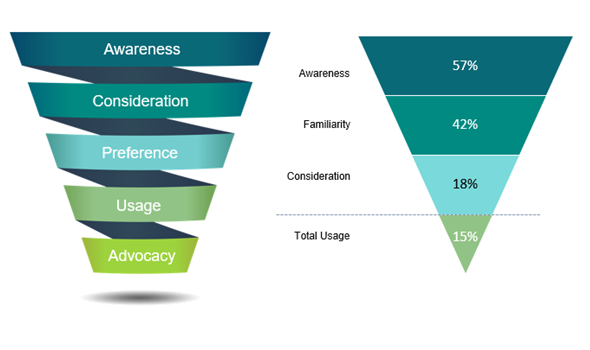Brand Evolution Series: Part 2
In the first part of this series, we discussed how brands are facing increasing pressures to keep up with changes in their industry and meet evolving customer needs. Factors such as digital transformation, changing competitive landscapes, and shifting audience priorities have made it more important than ever for brands to conduct robust research on their brand evolution. In this second part of the series, we will introduce a framework that can help brands gain the insights they need to position themselves effectively in the marketplace.
FRAME & IDEATE: Aligning Internal and External Views
Find out what impacts your brand position among customers and prospects. Keep abreast of changing customer needs and expectations that can give you a competitive edge. Make certain that you are measuring these factors and not those developed solely from your internal point of view.
The FRAME & IDEATE stage of the framework gives brands the platform and tools to explore and uncover hidden levers that motivate customer behaviors and perceptions. It brings views from your internal stakeholders and customers into alignment. Collaborative Workshops provide an environment for collaborative thinking among stakeholders to review your brand’s current position (e.g., strengths, weaknesses, opportunities), ideate their vision of your brand, and identify information needs expected from the external brand research.
Customer Summits and Immersions create a space for bringing select customers together to get their views on your brand, uncover their motivators for selecting one brand over another, identify the emotional drivers that create brand affinity, and do so by wrapping this within their need’s framework. In these sessions, we often deploy projective research techniques to uncover insights about brands, such as having respondents describe what a brand would look and act like if it were a person or through storyboarding their experiences with various brands.
FRAME & IDEATE helps identify and understand important aspects of your brand, including both functional performance associations and perceptual/emotional attachments. Functional performance associations refer to the practical aspects of a brand, such as its quality, reliability, and functionality. Perceptual/emotional attachments, on the other hand, refer to how customers feel about the brand, including their emotional connection to it, its tone and personality, and their overall affinity for it.
MEASURE: Quantifying Customer-Centric Brand Metrics
It’s important for brands to validate the right brand metrics, the ones that actually impact customer attitudes and behaviors. Brands can use insights from FRAME & IDEATE to develop a survey instrument that provides more definitive results on customer-centric brand metrics such as attributes, awareness, familiarity, consideration, favorability, and affinity. This can help measure how your brand is perceived and performs among key audiences, as well as how it stacks up compared to competitors.
MEASURE involves conducting surveys among a large audience to obtain quantifiable and validated results on various brand metrics. It reminds us that sizeable awareness does not ensure the same level of consideration and purchase intent, but that brand performance must pass through the filters of correct awareness (familiarity, association) and positioning on customers’ functional and emotional drivers. And, if you are not measuring the factors that matter most to customers, then you will veer off course on your brand position.
PERFORM: Monitoring and Adjusting Brand Performance
Customer needs, expectations, and behaviors are constantly evolving, and it’s important for your brand to monitor these changes and adjust its brand performance accordingly. PERFORM is a tool that can help brands track changes in the metrics and results captured in the baseline study, and can involve further workshops, summits, and ongoing quantitative research from the MEASURE phase.
PERFORM is particularly important when there are internal or external initiatives or dynamics that are affecting the brand, such as advertising or marketing campaigns, rebranding efforts, changes in the competitive landscape, economic recessions, or global pandemics. During these times, it’s important to monitor your brand performance and understand how these forces are impacting your brand position. PERFORM allows planners to track changes in brand metrics over time and identify any areas where brand performance may be shifting.
In Part 3 of the Brand Evolution series, we will discuss some smart practices related to brand research, as well as specific, tangible examples of how insights from the research are used.




